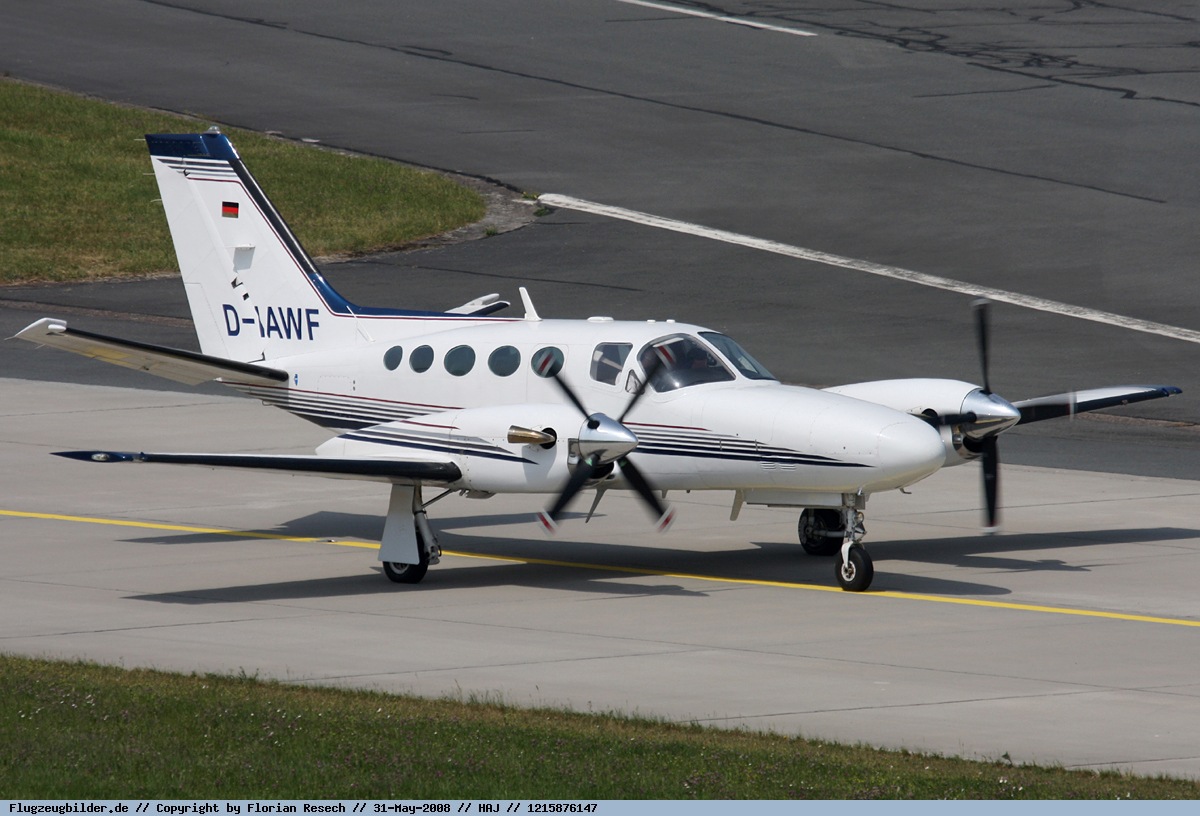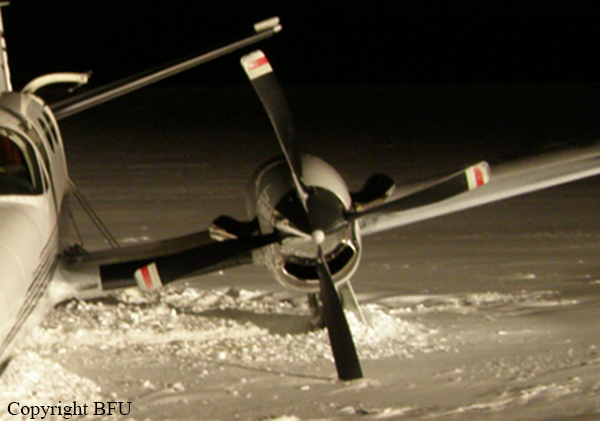Country
Crash of a Cessna 425 Conquest I in Helena
Date & Time:
Aug 11, 2021 at 0900 LT
Registration:
N783MB
Survivors:
Yes
Schedule:
Faribault - Missoula
MSN:
425-0103
YOM:
1982
Crew on board:
1
Crew fatalities:
Pax on board:
2
Pax fatalities:
Other fatalities:
Total fatalities:
0
Captain / Total hours on type:
800.00
Aircraft flight hours:
9576
Circumstances:
The pilot stated that on the morning of the accident he filled both wing fuel tanks to full. After takeoff, he climbed to his planned cruise altitude of 24,000 ft mean sea level (msl). While en route to his destination, the pilot reported that the left engine experienced a flame-out. The pilot opted to divert from the originally planned destination and descended. When the airplane was about 7,900 ft msl, the pilot reported that the right engine experienced a loss of power and that he was not going to be able to make it to the airport. Shortly thereafter, the airplane collided with trees and the airplane came to rest with the right wing and empennage severed from the fuselage.
Probable cause:
A flameout of both engines due to fuel starvation for reasons that could not be determined due to the airplane’s damage. There was fuel in the wing tanks at the time of the impact. Postaccident examination of the wreckage did not reveal any anomalies. A partial amount of fuel was found in both of the filter bowls, but it is unknown if fuel was able to reach the engines. A complete examination of the fuel system could not be completed due to the damage incurred to the airplane at impact. Both engines flaming out within a short time of one another is likely indicative of a fuel supply or delivery issue; however, the nature of the problem could not be identified during postaccident examination.
Final Report:
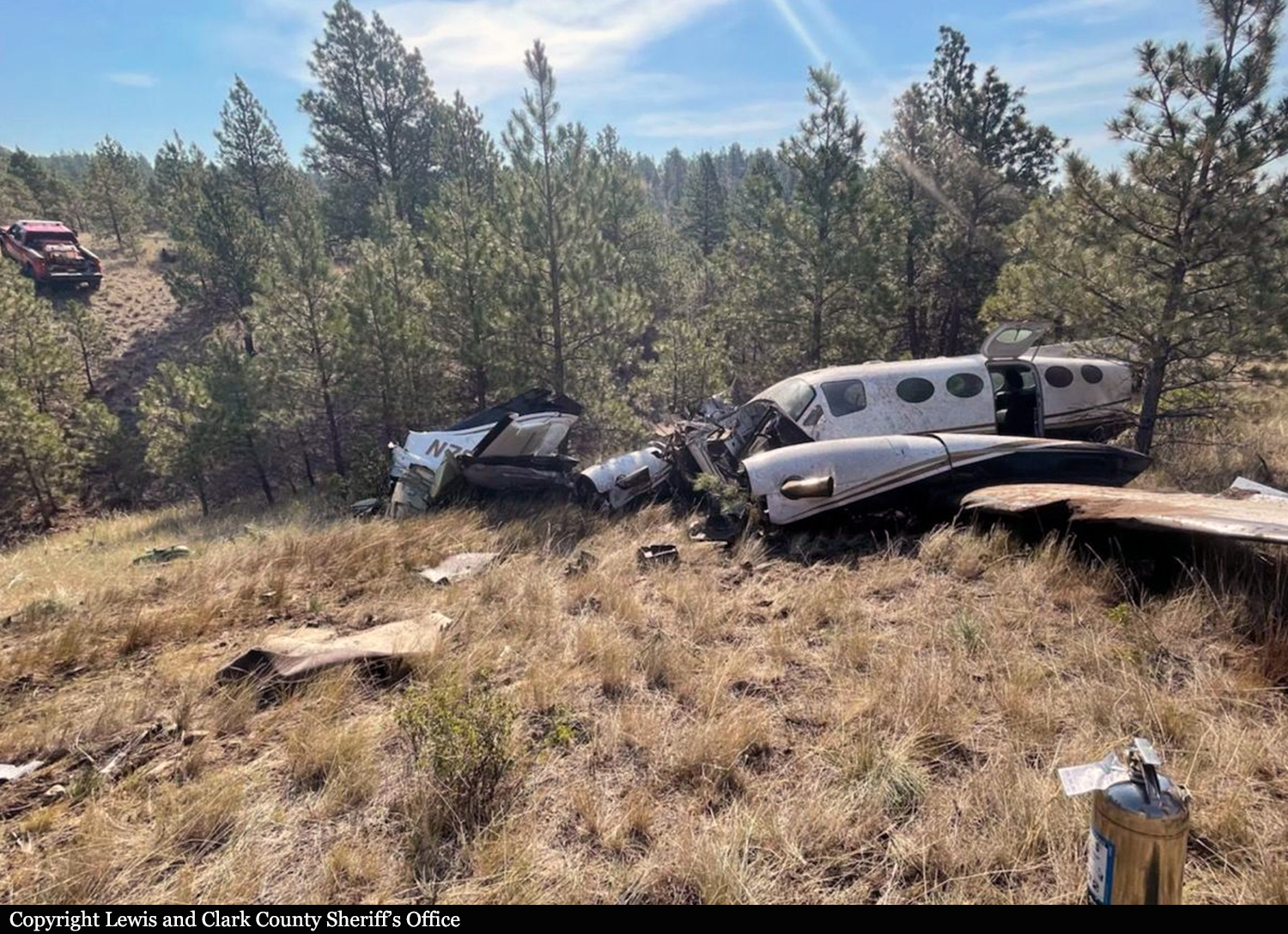
Crash of a Cessna 425 Conquest I in Butler: 1 killed
Date & Time:
Jun 10, 2019 at 1020 LT
Registration:
N622MM
Survivors:
No
Schedule:
Vero Beach - Olathe
MSN:
425-0187
YOM:
1983
Crew on board:
1
Crew fatalities:
Pax on board:
0
Pax fatalities:
Other fatalities:
Total fatalities:
1
Captain / Total hours on type:
1891.00
Aircraft flight hours:
6092
Circumstances:
During a cross-country flight, the pilot initiated a descent to his intended destination. During the descent, the pilot informed air traffic control (ATC) that he could not retard power on the right engine. Later in the descent, the pilot decided to shut down the right engine. The pilot communicated his desire to land at the nearest airport to ATC, and ATC provided the pilot with the clearance to divert. Radar data showed the airplane in a steady descent toward the airport. When the airplane was at an altitude of about 2,500 ft mean sea level, the pilot contacted ATC and stated that he was trying to get the airplane under control; radar data showed the airplane in a 360° right turn at the time. The pilot contacted ATC again and stated that he was going to land on a highway. No further transmissions were received from the pilot. After the right turn, the airplane continued in a descent through 1,300 ft mean sea level, at which point radar contact was lost. A witness saw the airplane and stated that the airplane was low and slow but appeared to be in stable flight with both propellers spinning. She did not see any smoke coming from the airplane. She saw the airplane flying northeast to southwest when it suddenly descended nose first into the ground. The airplane impacted a gravel road adjacent to a 100-fttall grain silo about 1 mile from the highway and about 3.3 miles from the airport.
Probable cause:
The pilot’s loss of airplane control during a descent to a diversion airport with only the left engine operating. Contributing to the accident was a malfunction of the right engine throttle, the cause of which could not be determined.
Final Report:
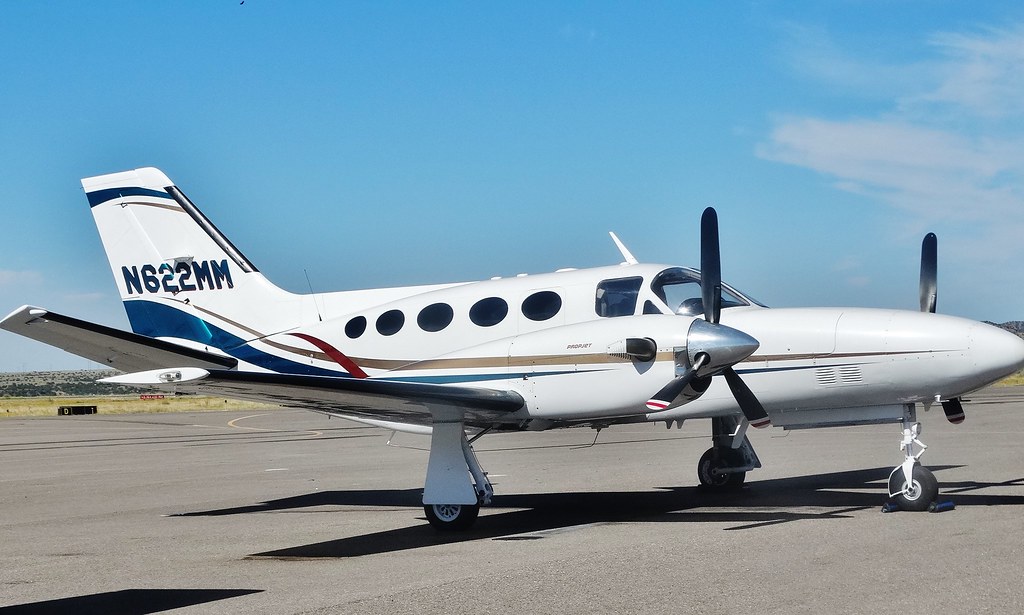
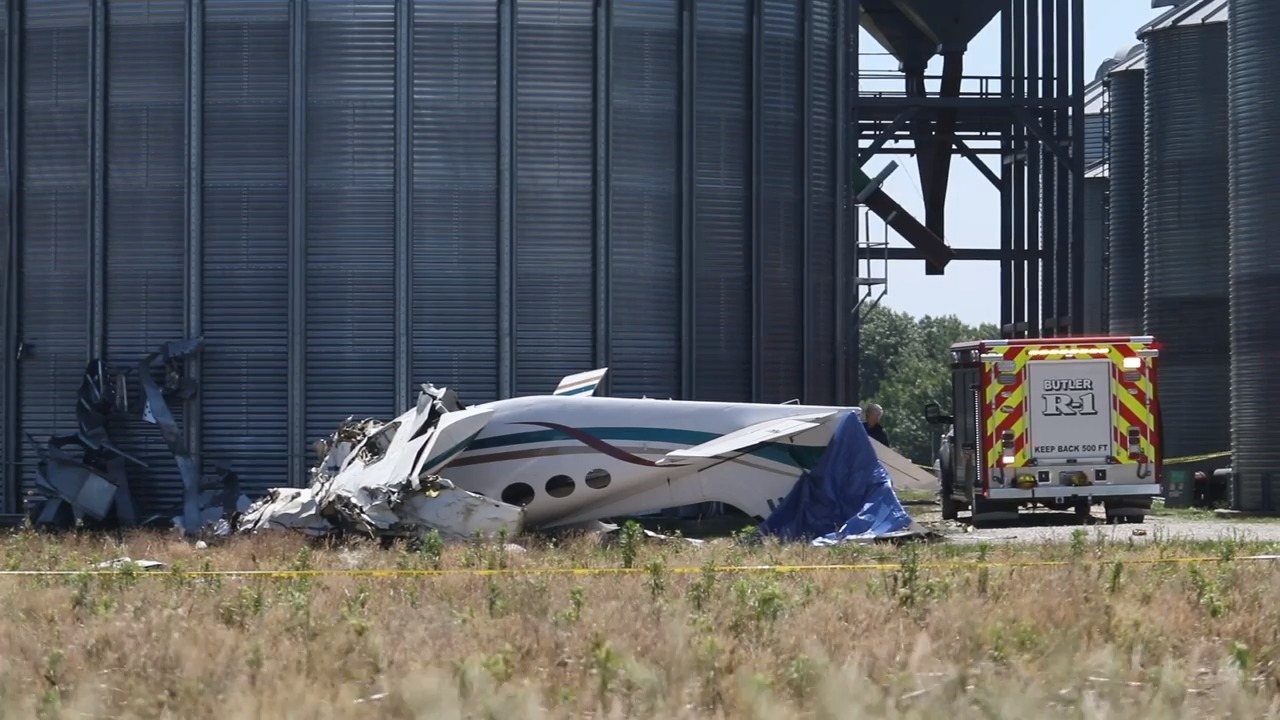
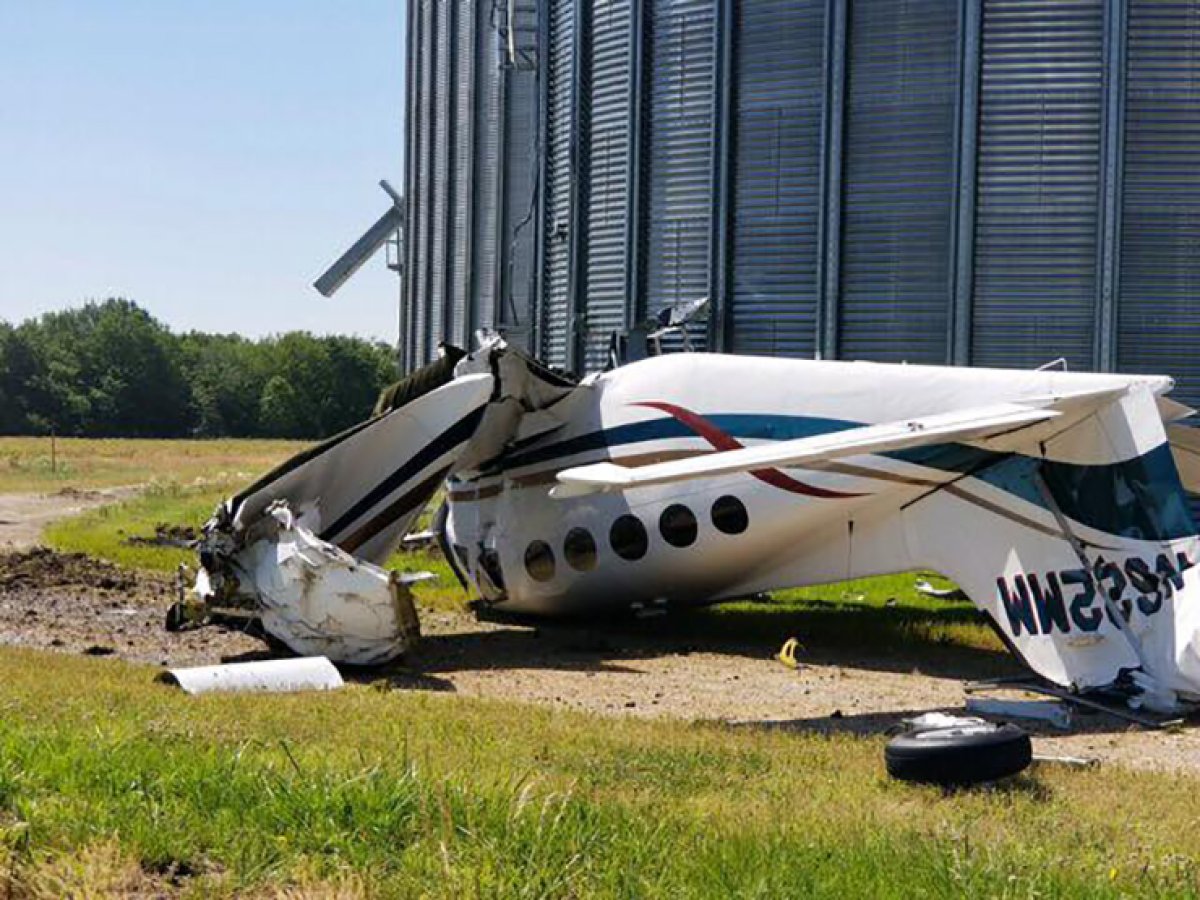
Crash of a Cessna 425 Conquest in Windhoek: 3 killed
Date & Time:
Jan 29, 2016 at 1010 LT
Registration:
V5-MJW
Survivors:
No
Schedule:
Windhoek - Windhoek
MSN:
425-0077
YOM:
1981
Crew on board:
3
Crew fatalities:
Pax on board:
0
Pax fatalities:
Other fatalities:
Total fatalities:
3
Copilot / Total hours on type:
256
Aircraft flight hours:
10108
Circumstances:
On 29 January 2016, at 08:10 a Cessna 425 Conquest, which was privately operated, crashed approx. 300 meters NNE of threshold Runway 26. 1.1.2 According to the flight plan filled on the 28th January 2016, the flight was scheduled for a renewal of CPL and IR ratings for the two pilots by a Designated Examiner (DE). Departure time was scheduled at 07:45 at a cruising altitude of FL100 for Hosea Kutako Airport. The pilots requested a procedure for an Instrument Landing System (ILS) approach. The Air Traffic Controller (ATC) cleared them for the procedure for runway 26 ILS approach with QNH 1024. They were also asked to report when at nine miles-inbound. At around nine miles they reported their location and were instructed to continue the approach along the glide slope. The DE requested a VOR approach for their next approach and an early right hand turnout that was approved by ATC who also required them to report when going around. The ATC stated that he saw them at around 4nm on final approach. He then stated that he looked away for a moment after which he heard a slight bang, then saw a ball of flames at about 300 meters north of threshold runway 26. He called out to the aircraft three times whilst looking out for it when he finally concluded that it could have been V5-MJW that had crashed. The ATC pressed a crash alarm after a moment when it did not go off, the controller then called the fire station and alerted them of the occurrence. The Airport’s Fire and Rescue team after receiving the initial notification from the ATC took around 10 minutes to reach the site, by that time fire had engulfed the plane and its occupants. The team took 3-4 minutes to extinguish the fire. The weather was reported as fine with winds about 140° at 08 kts with scattered clouds at 4000ft and unrestricted visibility.
Probable cause:
The aircraft stalled at low altitude and consequently impacted the ground.
Contributory Factors:
- Loss of control of the aircraft,
- Non-adherence of go-around procedures as set on the AIP,
- Normalization of deviation -where non-standard go-around procedures are executed.
Contributory Factors:
- Loss of control of the aircraft,
- Non-adherence of go-around procedures as set on the AIP,
- Normalization of deviation -where non-standard go-around procedures are executed.
Final Report:

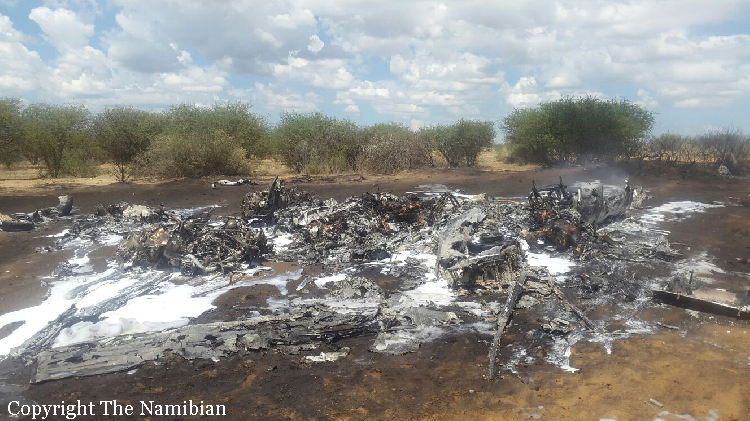

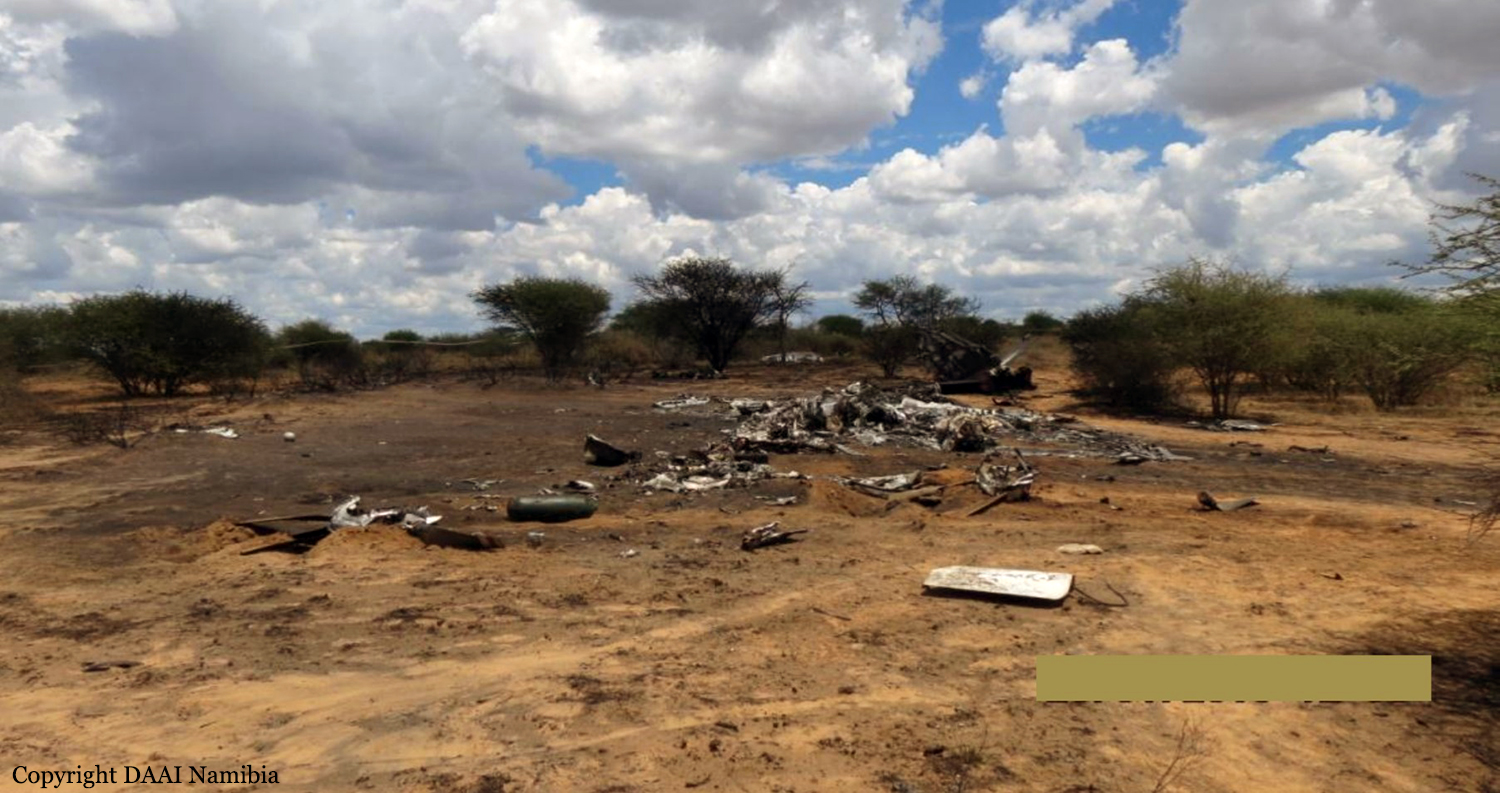
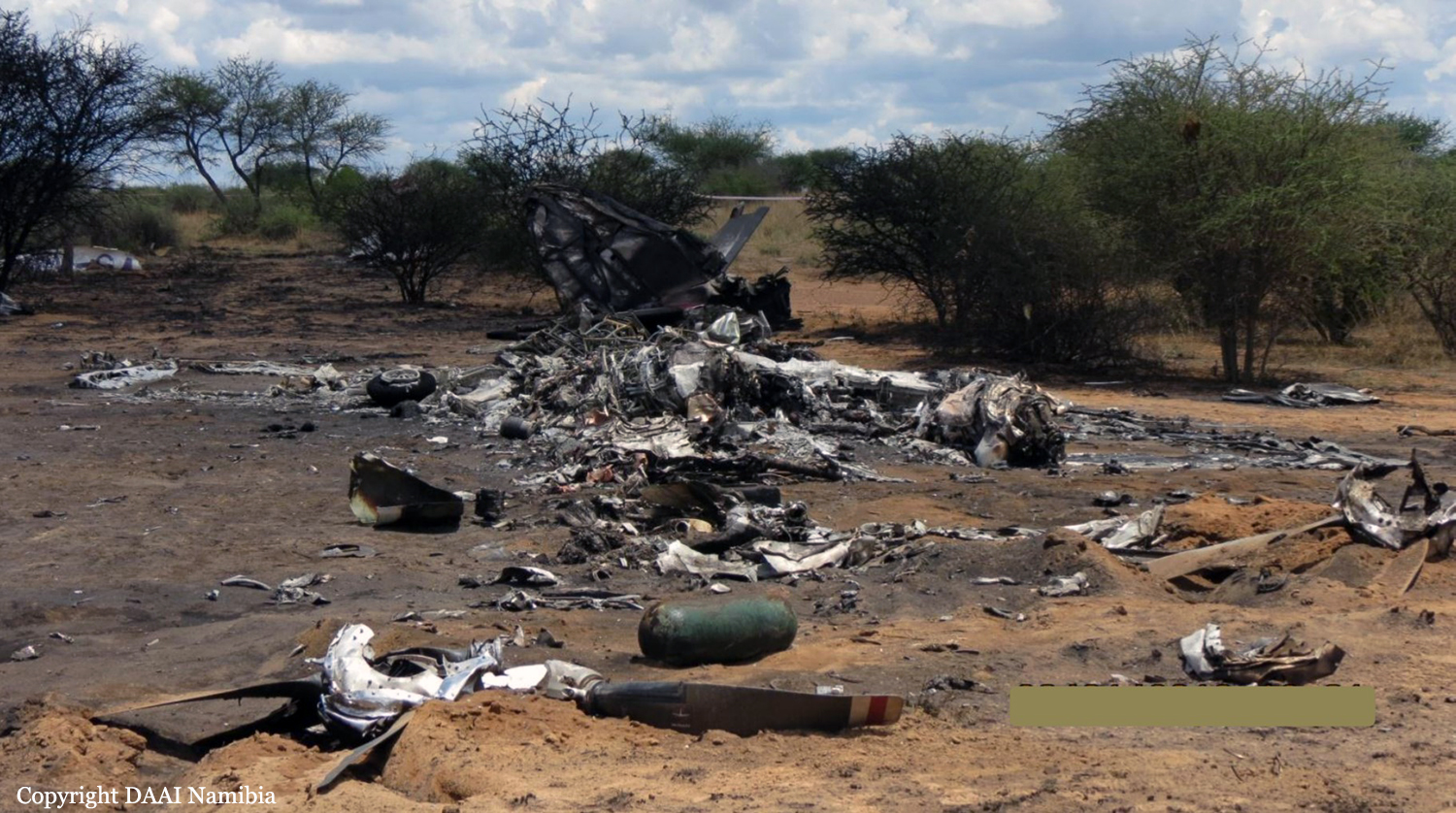

Crash of a Cessna 425 Conquest I in Canadian
Date & Time:
Mar 28, 2011 at 0825 LT
Registration:
N410VE
Survivors:
Yes
Schedule:
Grand Junction - Canadian
MSN:
425-0097
YOM:
1981
Crew on board:
1
Crew fatalities:
Pax on board:
6
Pax fatalities:
Other fatalities:
Total fatalities:
0
Captain / Total hours on type:
1000.00
Aircraft flight hours:
7412
Circumstances:
While on a straight-in global-positioning-system approach, the airplane broke out of the clouds directly over the end of the runway. The pilot then remained clear of the clouds and executed a no-flap circling approach to the opposite direction runway. The pilot said that his airspeed was high when he touched down. The landing was hard, and the right main landing gear tire blew out, the airplane departed the runway to the left, and the left main landing gear collapsed. No preaccident mechanical malfunctions or failures were found that would have precluded normal operation.
Probable cause:
The pilot’s continuation of the approach with excessive airspeed, which resulted in a hard landing and a loss of directional control.
Final Report:
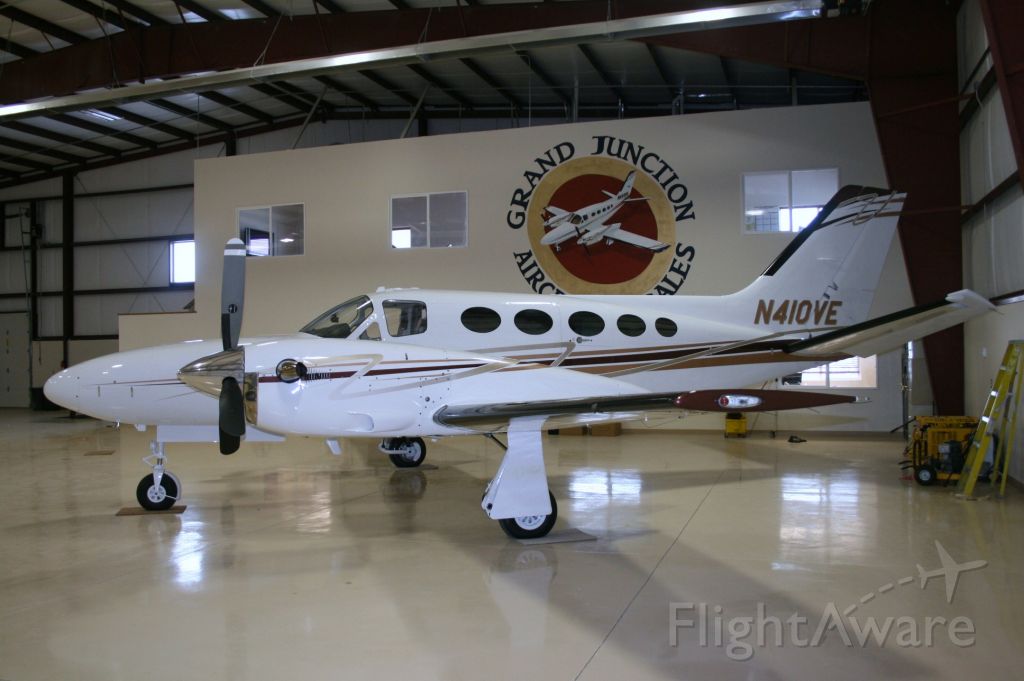
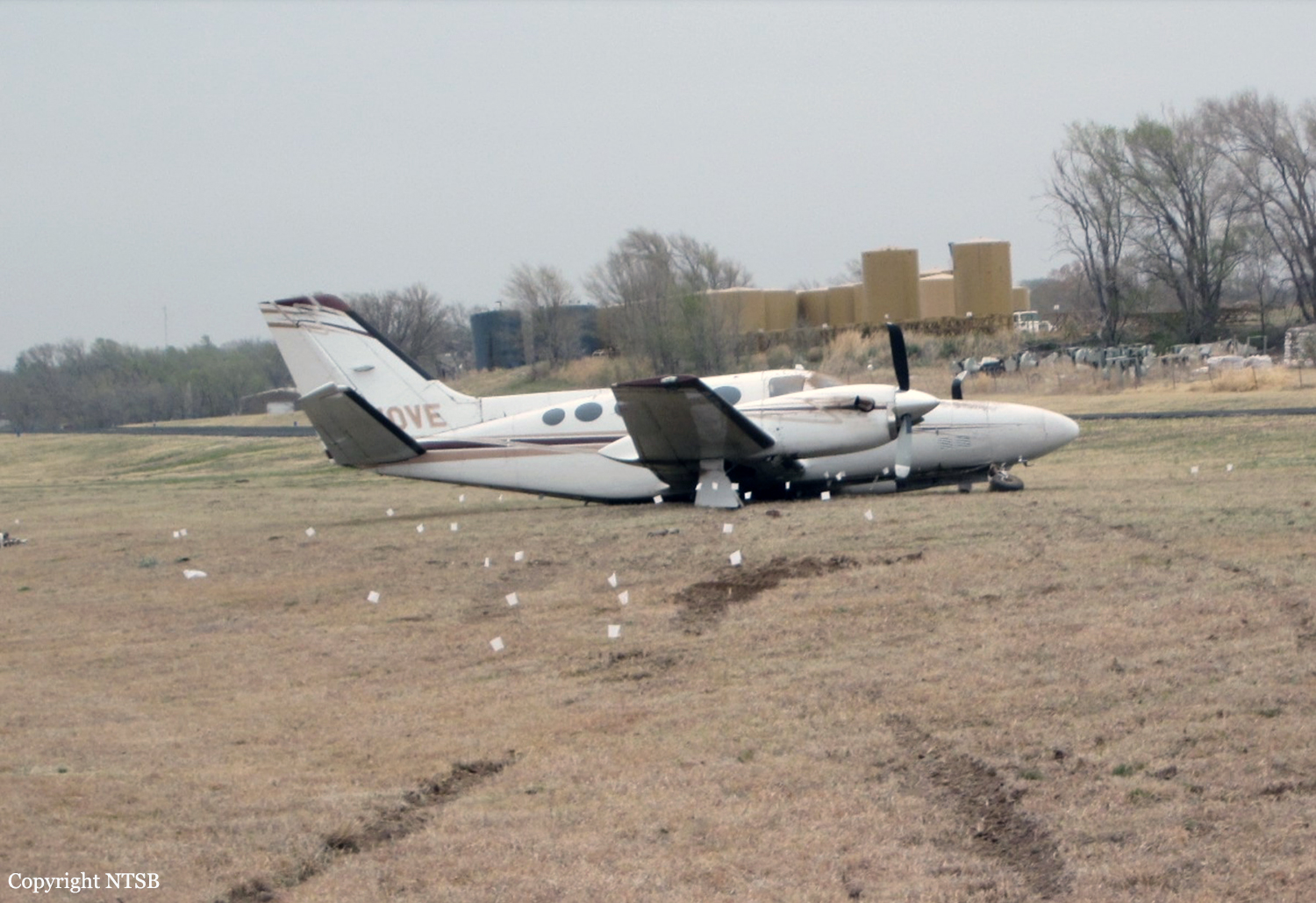


Crash of a Cessna 425 Conquest I in Munich
Date & Time:
Feb 2, 2010 at 0210 LT
Registration:
D-IAWF
Survivors:
Yes
Schedule:
Hanover - Munich
MSN:
425-0222
YOM:
1985
Crew on board:
2
Crew fatalities:
Pax on board:
0
Pax fatalities:
Other fatalities:
Total fatalities:
0
Captain / Total hours on type:
400.00
Copilot / Total hours on type:
300
Aircraft flight hours:
5836
Aircraft flight cycles:
4376
Circumstances:
The aircraft took off at 0041 hrs from Hanover (EDDV) for a positioning flight to Munich (EDDM) with a crew of two pilots. The intention was to make a subsequent air ambulance flight from Munich to Kiel. During the climb the crew received the instruction for a direct flight to Munich and the clearance for a climb to Flight Level (FL) 230. The radar data showed that the aircraft turned south-east and climbed to FL230 after take-off. At 0123:45 hrs the crew made radio contact with Munich Radar. About five minutes later, the controller advised the crew that both runways were closed for snow removal, but that the southern runway would re-open in about 25-30 minutes. In response, the crew advised they would reduce the speed somewhat. The crew stated that the temperature in flight altitude had been -40 °C. At 0133:58 hrs the controller issued descent clearance to FL110. According to crew statements in this phase there were problems with the left engine. A system check indicated that the engine’s Interstage Turbine Temperature (ITT) had exceeded 900°C and the torque had reduced to zero. The crew then first worked through the memory items before "beginning with the engine failure checklist". In the presence of the BFU the crew gave their reasons for the shut-off of the engine as being the fast increase of the ITT and the decrease of the torque to zero. The crew could not give any other engine parameters like Ng per cent RPM, propeller RPM, fuel flow, oil pressure or oil temperature. The co-pilot reported via radio: "… we request to maintain FL150 … we have engine failure on the left side, call you back." At that time, the radar data showed the aircraft at FL214. As the controller asked at 0138:15 hrs if a frequency change to approach control were possible, the co-pilot answered: "... give us a minute, please, and then we report back, until we have everything secured ..." At 0143:22 hrs the co-pilot advised the controller that the engine had been "secured" and a frequency change was now possible. The crew subsequently reported that, three to five minutes later there had been brief, strong vibrations in the right engine. The crew could not state which actions they had carried out after the descent clearance and during shut-off and securing of the left engine. Both pilots stated that there was no attempt to re-start the left engine. After changing frequency to Munich Approach Control the crew was advised that runway 26L was available. The co-pilot declared emergency at 0143:48 hrs, about 25 NM away from the airport of destination, mentioning again the failure of the left engine. The controller responded by asking the crew what assistance they would require, and asked if a ten-mile approach would be acceptable. This was affirmed. At 0149:28 hrs the controller gave clearance for an ILS approach to runway 26L. At that time the radar data showed the airplane in FL78 flying with a ground speed of 210 kt to the south-east. The aircraft turned right towards the final approach and at 0151:53 hrs it reached the extended runway centre line about 17 NM prior to the runway threshold in 5,400 ft AMSL with a ground speed of 120 kt. At 0154:12 hrs the controller said: "… observe you a quarter mile south of the centre line." According to the radar data the aircraft was in 5,000 ft AMSL with a ground speed of 90 kt at that time. The co-pilot answered: "Ja, we are intercepting…". Twenty seconds later the controller gave clearance to land on runway 26L. Up until about 0157:30 hrs the ground speed varied between 80 and 90 kt. From 0157:43 hrs on, within about 80 seconds, the speed increased from 100 kt to 120 kt. Thereby, the airplane had come within 5.5 NM of the threshold of runway 26L. Up until 0200:53 hrs the airplane flew with a ground speed of 100 - 110 kt. At 0201:32 hrs ground speed decreased to 80 kt. At that time, the airplane was in 1,900 ft AMSL and about 1.5 NM away from the threshold. Up until the last radar recording at 0202:27 hrs the ground speed remained at 80 kt. The crew stated the approach was flown with Blue Line Speed. During the final approach the aircraft veered slightly to the left and tended to sink below the glidepath. Approximately 3 NM from the threshold the approach lights had become visible and the flaps and the landing gear were extended. Then the airplane veered to the left and sank below the glidepath. The co-pilot stated a decision for a go-around was made. When an attempt was made to increase power from the right engine, no additional power was available. The aircraft had lost speed and to counteract it the elevator control horn was pushed. Prior to the landing, rescue and fire fighting vehicles were positioned at readiness in the vicinity of the airport’s southern fire station. The weather was described as very windy with a light snow flurry. The fire fighters subsequently reported they had seen two white landing lights and the dim outline of an approaching aircraft. The aircraft’s bank attitude was seen to alter a number of times. Shortly before landing, the landing lights suddenly disappeared and the aircraft was no longer visible. The aircraft impacted the ground about 100 metres prior to the threshold of runway 26L. The crew turned off all the electrical systems and left the aircraft unaided. During the initial interviews by BFU and police the co-pilot repeatedly talked about a go-around the crew had intended and he had, therefore, pushed the power lever for the right engine forward. In later statements he stated that the engine power was to be increased. A few days after the accident, the BFU asked both pilots for a detailed written statement concerning the course of events. The BFU received documents with a short description of the accident in note form. The statements of the two pilots were almost identical in content and format.
Probable cause:
The following findings were identified:
- When the left engine was shut down, the propeller was not feathered,
- During the final approach, the speed for an approach with one shut-off engine was lower than the reference speed,
- The airplane veered to the left during power increase and became uncontrollable due to the lack of rudder effectiveness,
- Non-adherence to checklists during the shut-off of the engine and,
- Poor crew coordination.
- When the left engine was shut down, the propeller was not feathered,
- During the final approach, the speed for an approach with one shut-off engine was lower than the reference speed,
- The airplane veered to the left during power increase and became uncontrollable due to the lack of rudder effectiveness,
- Non-adherence to checklists during the shut-off of the engine and,
- Poor crew coordination.
Final Report:
